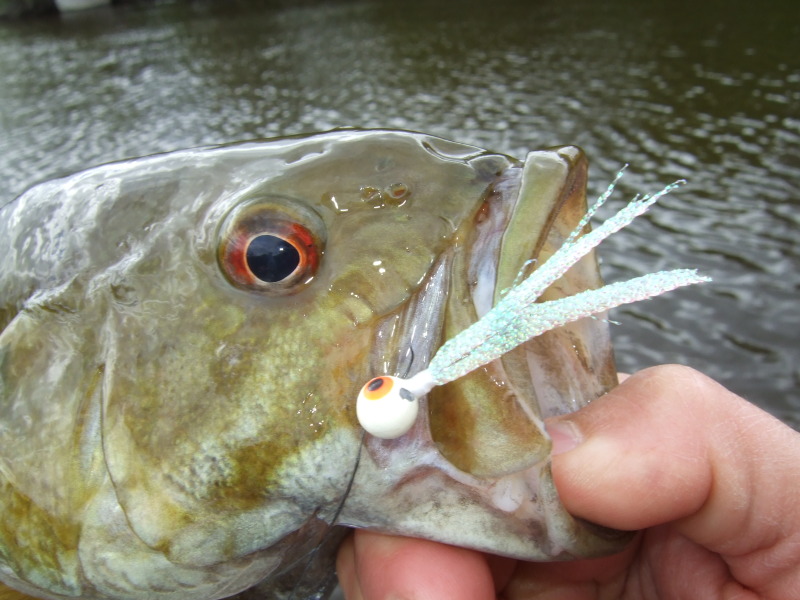
A Strong Connection. For hard-charging fish like smallies, connecting jigs and other compact lures to the line with a Palomar knot ensures a quick and solid connection.
By Nick Simonson
For standard tackle fishing and connecting the line directly to the hook, a swivel, or even a small lure, the Palomar knot shines above most others not only in its simplicity but also its strength.
With just four simple steps that retain more than ninety-five percent of a line’s given pound-test rating, the Palomar knot provides reassurance that the connection to terminal tackle is strong and non-slip, and that when a big fish is on the other end it’s less likely that line breakage will occur at the tie-in point. Master this easy on-the-water option and you’ve got an effective connection for most items of tackle.
Tying the Palomar Knot
The ability to quickly connect a lure to the line allows anglers to get back to the action following a bite-off, snag or change of offering. The Palomar knot’s simple four-step process will help get those smaller lures back in the water quickly. Designed to be looped over jigs, plain hooks and snaps, the Palomar knot is a quick and easy tie.
CLICK HERE FOR STEP-BY-STEP TUTORIAL
First, start by running a loop of line through the eye of the hook or jig in a length about one-and-a-half times as long as the lure (1).
Be certain there is no paint or sealant in the eye of the lure as this will make running the doubled-over line through the opening difficult and can damage the line as the knot is tightened, weakening it when a fish strikes. Once the loop is formed, create an overhand knot by folding the loop back over and through the line, with the lure located on the doubled-up line in the middle of the bottom of the knot (2).
From there, pull the hook through the loop (3).
Using a bit of water or saliva, wet the line and pull on the lure and the doubled-up line and tag end of the knot. Wetting the knot will help prevent any friction and heat stress and preserve the integrity of the line. Pull the line until it is tight and the knot rests firmly against the top of the hook or lure’s eye. You should be able to see the two wraps resting snugly on top of one another (4).
Keep an Eye Out
For lures such as jigs, which have the hook eye sealed off inside the lead head, the Palomar is good to go after tightening. For wire hooks, such as worm hooks used for bass, be certain the Palomar knot is seated at the top of the hook eye, as it may become wedged where the wire of the eye meets the start of the hook shank. A strong hookset with the line in that position may cause the loop of the Palomar knot to thread through that small opening – especially with superlines – resulting in a lost fish and a lost hook. Additionally, for those lures that need to be presented horizontally or at another angle preferred by fish, particularly picky bluegills or crappies under the ice, reset the Palomar knot after every caught fish so that it rests at the proper point on the eye for the best presentation.
While a Palomar knot can be used on crankbaits for a quick return to the water, it can be a bit restrictive in their motion and a knot which forms a more open loop at the tie-in point is a better choice. Additionally, looping the line over a large bait, such as a stickbait like a Husky Jerk, can be done but it is a bit cumbersome. Consider knots like the Rapala knot for these applications when time and action allow for it.
For those starting out in angling, the Palomar knot is one of the first and best options for connecting line to terminal tackle. It’s simple, strong and something that can be used on most every lure. Like learning to tie a shoe, it’s something easy which may be hard to explain and is better off practiced until it’s down pat.
